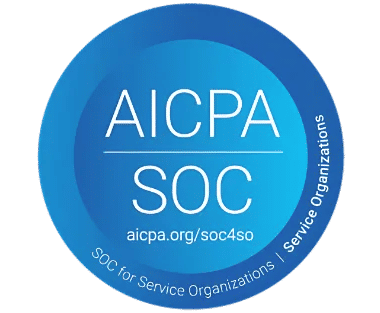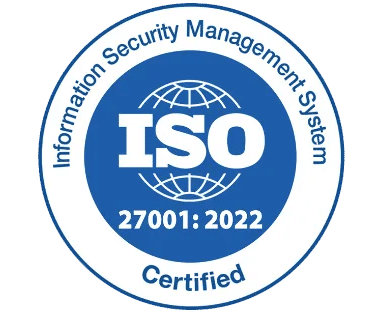20 Expense Management Best Practices for a Successful Business

Managing employee expenses is essential for keeping company costs under control. Work-related expenses generally fall into four main categories. Travel and entertainment (T&E) expenses include flights, hotels, meals, and business outings, which are common for employees attending meetings, conferences, or client visits. Professional dues cover membership fees for industry organizations, certifications, and continuing education, ensuring employees stay up to date in their fields. Miscellaneous business expenses encompass office supplies, software subscriptions, and other work-related purchases that support daily operations.
Employees can either get reimbursed by submitting an approved expense report or use company-issued spending cards for seamless tracking. Petty cash is still an option for small expenses, but it’s inefficient—manual reimbursements can take up to 30% more processing time. A well-structured system helps reduce unauthorized spending by up to 25% while improving financial oversight by a study.
Why Should You Adopt Expense Management Best Practices?
Effectively tracking and managing business expenses is essential for organizations aiming to enhance financial efficiency and long-term stability. By adopting strategic expense management practices, businesses can:
- Maximize Resources
A well-structured expense management approach helps you make the most of your financial resources. Regular expense reviews allow you to pinpoint areas where costs can be minimized, freeing up funds for critical business investments. This ensures you stay agile and competitive in an evolving market.
- Foster a Culture of Transparency
Prioritizing expense management across all levels of your organization fosters financial responsibility and accountability. When transparency becomes the norm—from executives to new hires—it strengthens trust, encourages ethical decision-making, and builds a more resilient company culture.
- Safeguard Your Business for the Future Economic uncertainties make financial preparedness a necessity. By implementing sound expense management practices, your business can build a financial cushion for unforeseen challenges. Additionally, maintaining a strong credit profile can be beneficial when seeking funding options like SBA 7(a) loans or negotiating better credit terms to support future growth.
20 Best Practices for Effective Business Expense Management
- Assign Budget Owners for Each Department
Each team should have a designated budget leader who is accountable for managing their department’s expenses. This role involves monitoring expenditures and ensuring they align with company financial policies. By having a leader in place, responsibility for financial management is decentralized, promoting greater accountability within teams.
This structure helps streamline budgeting processes and ensures proper expense tracking. The budget leader also serves as the point of contact for any financial queries or concerns within their team.
- Encourage Cost-Conscious Decision-Making
Fostering a culture of financial responsibility is essential for the success of any organization. Encourage your teams to be mindful of their spending by evaluating the cost-effectiveness of their choices. Whether it’s making purchases or planning business activities, always consider how it can contribute to the bigger financial picture. By promoting thoughtful decision-making, employees will understand the importance of balancing quality with cost.
Cultivating this mindset helps drive sustainable growth and ensures resources are used efficiently. When every team member is on board, financial responsibility becomes a collective effort that strengthens the entire company.
- Maintain a Balanced Approach—Be Firm Yet Fair
It’s crucial to enforce expense policies consistently while maintaining fairness across the board. Clearly communicate the rules and outline the consequences for any violations so everyone knows what to expect. However, it’s just as important to ensure that employees understand their rights and responsibilities in this process. By being transparent, you create an environment of trust and accountability.
A balanced approach helps employees feel respected while also upholding the company’s standards. This clarity leads to better compliance and fosters a positive, fair workplace culture.
- Negotiate Vendor Contracts & Discounts
Collaborate closely with your suppliers to negotiate more favourable terms. This could include securing better prices, extended payment periods, or discounts based on larger order volumes. By maintaining open communication, you can build stronger relationships with your vendors.
Over time, these partnerships can result in significant cost savings for your business. A long-term approach to supplier relations can also lead to more reliable service and consistent product quality. This strategy not only reduces costs but strengthens your overall supply chain.
- Implement Strong Fraud Prevention Measures
To protect company finances, it’s crucial to implement strong security measures. Introducing two-factor authentication for expense approvals adds an extra layer of protection, ensuring only authorized individuals can approve expenses. Random audits help detect and deter fraudulent claims, acting as a safeguard against misuse. Consistent enforcement of these policies sends a clear message that financial integrity is a top priority.
By combining both proactive and reactive strategies, we can maintain transparency and trust in the financial process. These measures are essential for keeping company finances secure and well-managed.
- Set Up Approval Tiers Based on Expense Amounts
A multi-level approval system ensures better control over company spending. For higher-value expenses, requiring additional authorization helps prevent unauthorized transactions. This layered approach allows for more oversight, ensuring that large expenses are thoroughly vetted before approval.
By involving multiple decision-makers, financial accountability is upheld, reducing the risk of errors or fraud. This system also fosters a culture of responsibility, where every significant expense is properly justified.
- Reward Teams That Excel in Expense Management
Recognizing employees or teams who consistently show cost-conscious behaviour and follow expense policies is a great way to encourage responsible financial management. Rewarding those who manage expenses wisely helps reinforce positive behaviours and sets a strong example for others. Public recognition, along with tangible rewards, can motivate teams to prioritize cost-efficiency. It also creates a culture where employees feel accountable for their financial decisions. Acknowledging these efforts boosts morale and strengthens commitment to company policies. This approach not only rewards individuals but also promotes a shared sense of responsibility within the organization.
- Automate Expense Management
Automated expense tracking software can significantly streamline the approval process, cutting down on paperwork and minimizing the risk of human error. With automation, expenses are tracked in real-time, making the approval process faster and more accurate. This reduces delays and ensures that all expenses are properly documented.
By automating routine tasks, teams can focus on more strategic activities, boosting overall efficiency. Automation also provides better financial control by offering transparent, easy-to-access data.
- Monitor and Control Travel Expenses
Business travel can quickly become a major expense, so it’s important to establish clear policies to manage costs effectively. Setting travel budgets ensures that expenses stay within reasonable limits, while preferred vendors help secure better rates and consistency. Clearly defined reimbursement limits prevent overspending and promote financial discipline.
These guidelines help employees make informed decisions when booking travel, ensuring that costs are kept in check. By having structured policies in place, businesses can maintain control over travel expenditures.
- Foster a Culture of Transparency
Transparency should be a core value in your company’s culture, especially when it comes to financial practices. Employees must understand the importance of clear financial reporting and the role they play in responsible spending. Open communication about financial policies ensures that everyone is on the same page, reducing confusion or misunderstandings.
When employees are informed, it builds trust and encourages adherence to policies. A transparent environment fosters accountability and empowers individuals to make smarter financial decisions
- Pay Vendors on Time (or Earlier)
Prompt payments foster strong vendor relationships and help avoid late fees or penalties. They show reliability and build trust, making vendors more willing to offer better terms.
Timely payments also ensure smooth operations by preventing service disruptions. Additionally, maintaining a good payment history strengthens your company’s financial reputation.
- Encourage Employees to Submit Expenses Promptly
Late expense submissions can throw off financial planning and delay reimbursements, causing unnecessary stress. When reports aren’t submitted on time, it creates budgeting gaps and makes cash flow harder to manage. This can lead to unexpected financial hiccups and make forecasting more challenging.
Setting clear deadlines for expense reporting keeps everything organized and ensures records stay up-to-date. It also helps speed up processing, so reimbursements happen without delays. By staying on top of deadlines, you keep financial operations running smoothly and stress-free.
- Perform Regular Expense Audits
Regular audits help keep expense reports accurate and transparent while preventing financial inconsistencies. By reviewing reports routinely, you can quickly spot discrepancies and address any errors before they become bigger issues. These audits also play a crucial role in detecting fraudulent activities, protecting the company from potential losses.
Analysing spending patterns during these reviews can highlight areas where costs can be reduced. Identifying unnecessary expenses or inefficiencies helps optimize budgets and improve financial planning.
- Leverage Digital Receipts & Paperless Systems
Encouraging employees to submit digital receipts makes expense reporting faster and more efficient. Using cloud-based expense management tools simplifies the process, reducing paperwork and manual errors. Going paperless speeds up approvals, ensuring reimbursements happen without unnecessary delays.
It also cuts down on administrative work, freeing up time for more important tasks. Digital records enhance security by minimizing the risk of lost receipts and unauthorized changes.
- Provide Training on Expense Policies & Tools
Regular training sessions help employees understand proper expense reporting, keeping them informed about policy updates and best practices. When employees know the correct procedures, they are less likely to make errors or submit incomplete reports. Clear guidelines ensure smoother approvals and faster reimbursements, reducing back-and-forth clarifications.
Ongoing training also reinforces compliance, making it easier to follow company policies. A well-informed workforce leads to better financial accuracy and fewer policy violations.
- Utilize Corporate Credit Cards with Spending Limits
Issuing company credit cards helps streamline expense management by reducing reimbursement delays and cash flow disruptions. Employees can make necessary purchases without waiting for out-of-pocket reimbursements, ensuring smoother transactions. To maintain control over spending, companies should set predefined limits based on employee roles and responsibilities.
This prevents overspending while ensuring employees have the funds they need for business expenses. Clear policies on card usage help maintain financial discipline and accountability.
- Centralize Expense Data for Better Oversight
Consolidating all expense records into a single platform improves visibility and streamlines financial tracking. A centralized system makes it easier for finance teams to monitor transactions and ensure accuracy. By having all data in one place, companies can quickly identify spending trends and adjust budgets accordingly.
This approach helps prevent budget overruns by providing real-time insights into expenses.
- Conduct Thorough System Testing Before Deployment
Before rolling out a new expense management system, conducting User Acceptance Testing (UAT) is essential to ensure a smooth transition. Testing allows finance teams to identify technical issues, user challenges, and workflow inefficiencies early on. By addressing these bottlenecks in advance, businesses can prevent disruptions and improve system performance.
UAT also helps refine features, making the platform more user-friendly and efficient. Ensuring the system works seamlessly before launch reduces errors and minimizes downtime.
- Regularly Check Expenses
As your business grows and the market evolves, your expenses will naturally change. It’s important to conduct regular reviews or audits to stay on top of these shifts. By evaluating your spending patterns, you can uncover areas for cost-cutting.
For instance, reducing unnecessary packaging or streamlining operations can result in significant savings. Identifying inefficiencies early on ensures you’re always improving your bottom line.
- Create Clear Expense Policies & Guidelines
Developing easy-to-follow expense guidelines is essential for managing company finances effectively. Ensure these guidelines are easily accessible to all employees for quick reference. Clear and straightforward policies help set expectations and minimize confusion. When everyone is on the same page, it leads to more efficient expense tracking and reporting with just $49. This clarity also prevents potential misunderstandings that could arise from sustainable rules.
How Expense Tracker 365 Helps You Track Every Dollar
Expense Tracker 365 makes it easy to follow expense management best practices by providing a simple, user-friendly platform for tracking all your spending. With its intuitive features, you can monitor your expenses in real-time, ensuring you’re always aware of where your money is going. This tool helps you stick to expense management best practices by organizing your finances and offering clear insights into your spending habits. By utilizing Expense Tracker 365, you can easily identify areas to cut costs and stay within budget
Conclusion
Using an automated system for effective expense management simplifies the process for employees to create and submit expense claim reports electronically, with receipts digitally captured through a mobile app featuring optical character recognition (OCR). This employee expense management software ensures automatic adherence to company policies in the reimbursement process, helping to reduce the risk of expense fraud.
Expense Tracker 365 software, when integrated with Microsoft ecosystem automation software, provides a comprehensive electronic expense management solution. It offers employees various payment options while giving the company complete visibility into all employee expense reimbursements and supplier purchases.
Frequently Asked Questions
1. What is the difference between a corporate card and a purchasing card?
A corporate card is typically issued to employees for general business expenses, such as travel, dining, and client entertainment. In contrast, a purchasing card (P-card) is designed specifically for procurement-related expenses, such as office supplies, vendor payments, and other company-approved purchases. While corporate cards offer broader spending flexibility, purchasing cards often come with stricter controls and spending limits to streamline purchasing processes and reduce administrative costs.
2. What is the difference between a corporate credit card and a purchase credit card?
A corporate credit card is meant for a wide range of business expenses and is issued to employees who frequently incur costs on behalf of the company. These cards often have customized limits based on roles and spending needs. A purchase credit card, on the other hand, is dedicated to procurement transactions and is commonly used by employees responsible for ordering supplies or managing vendor payments. Purchase credit cards typically integrate with accounting systems for easier reconciliation and expense tracking.
3. What is the difference between a corporate card and a business card?
A corporate card is issued to larger organizations and is often backed by a company’s credit, with individual employees using it for approved business expenses. Business cards, however, are typically for small to mid-sized businesses and may require the business owner to provide a personal credit guarantee. Corporate cards generally have more robust expense tracking and reporting features, while business cards function similarly to personal credit cards but with business-related perks.
4. What is a purchasing card?
A purchasing card (P-card) is a type of company-issued payment card used to buy goods and services directly from vendors. It helps businesses simplify procurement, reduce purchase order processing costs, and improve transaction tracking. P-cards often come with predefined spending limits, merchant category restrictions, and automated reconciliation features to enhance financial control.
5. How do corporate cards help with expense management?
Corporate cards streamline expense tracking by centralizing company-related spending, reducing the need for manual reimbursements. Many corporate cards integrate with expense management software, allowing businesses to automate reporting, monitor spending patterns, and enforce compliance with company policies. These features help organizations control costs, reduce fraud risks, and improve overall financial efficiency.
6. Are corporate cards and purchasing cards tax-deductible?
Yes, expenses made using corporate and purchasing cards are generally tax-deductible as long as they are legitimate business expenses. However, proper documentation, such as receipts and expense reports, is required for tax compliance. Businesses should ensure that all transactions align with tax regulations to avoid penalties.
7. Can employees use corporate cards for personal expenses?
Employees are typically prohibited from using corporate cards for personal expenses, as these cards are meant strictly for business-related transactions. Many companies implement strict policies and monitoring systems to prevent misuse. Unauthorized personal use of a corporate card may result in disciplinary action, or the employee being required to reimburse the company.










_svxLrd-8yH.png)

_2VYSFUTN5m.png)

_JiluXJRGNl.svg)

_2djTKNocf.png)





_Rapo0hRMBy.png)










